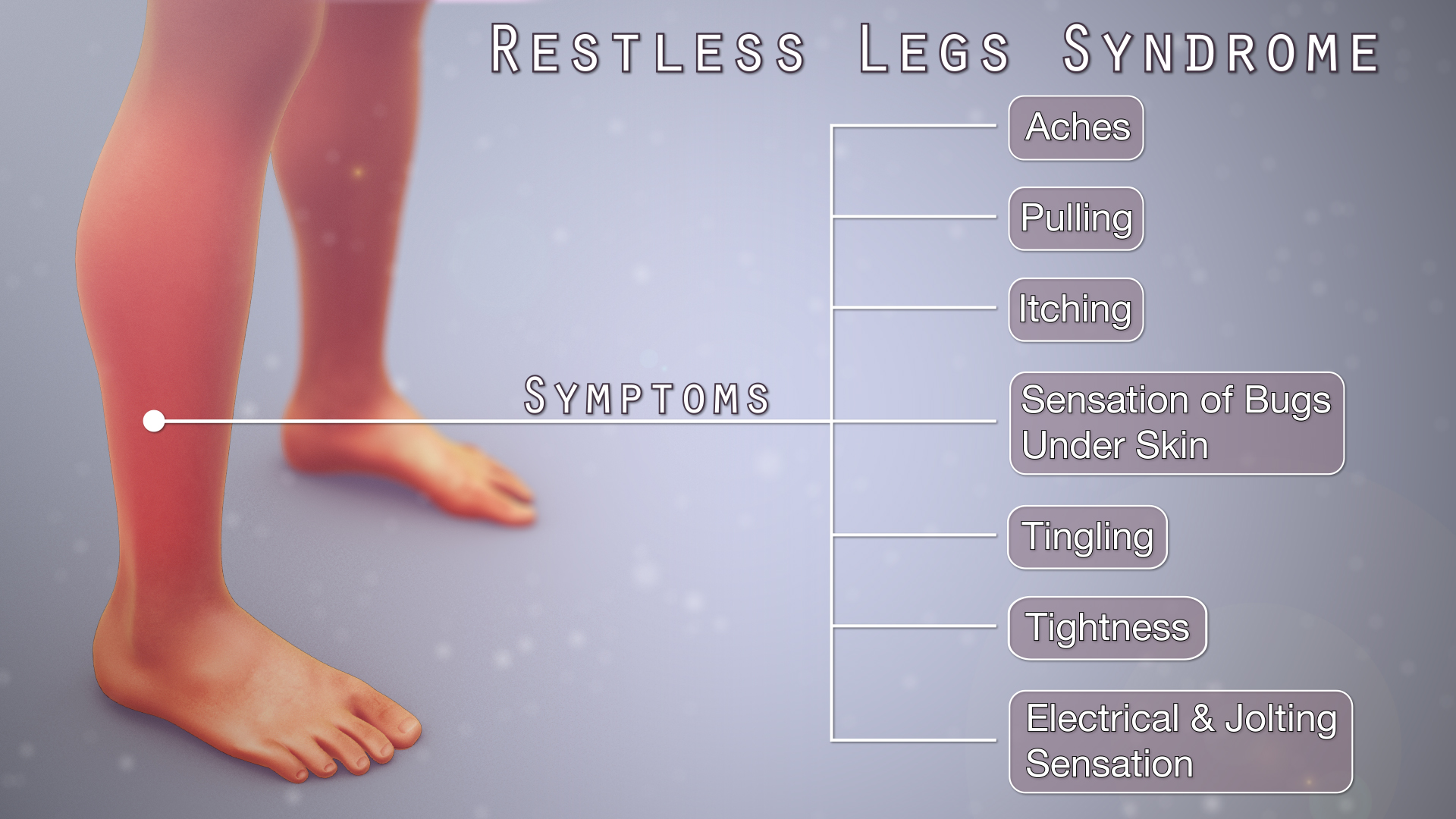A neurological disorder in which there is an uncontrollable urge to move the legs is known as Restless Legs Syndrome (RLS). This urge to move the legs arises because of a very uncomfortable sensation in the legs such as itching, crawling, aching, pulling, throbbing, or pins and needles.
RLS is a nervous system disorder and is also known as Willis-Ekbom disease. It is considered a sleep disorder as it usually occurs or gets worse when one is resting or trying to sleep. Since it interferes with sleep, it causes fatigue and sleepiness during the day. RLS disorder can affect anyone of any age, but it is more likely to occur in middle age and affects mostly women. Around 10 percent of people in the U.S. suffer from restless legs syndrome.

Symptoms
The most common signs and symptoms of restless legs syndrome are:
- Irresistible urge to move
- Uncomfortable sensations such as pins and needles, itching, pulling, crawling, throbbing, creeping, and aching in the lower part of the body
- Severity of the symptoms vary from moderately uncomfortable to intolerable
- Sensations may occur on one side of the body or may happen on both sides
- In rare cases, the uncomfortable sensations may occur in the chest, head, or arms
- Daytime sleepiness
- Fatigue
Causes
The exact cause of restless legs syndrome is not known but there are certain factors that might increase the risk of developing this syndrome. These factors are:
- Genes - almost half the people with RLS have a family member with this condition.
- Chronic diseases - iron deficiency, Parkinson’s disease, diabetes, kidney failure, and peripheral neuropathy are a few diseases which include RLS symptoms.
- Medications - certain drugs such as antidepressants, antipsychotics, anti-nausea medicines, and antihistamines may increase the severity of RLS symptoms.
- Pregnancy - hormonal changes in the body during the last trimester may give rise to RLS but the symptoms disappear after the baby is born.
- Lifestyle - consumption of alcohol, tobacco, caffeine, underlying sleep conditions such as sleep apnea, and lack of sleep can trigger the RLS symptoms.
Treatment
If the restless legs syndrome is caused by an underlying medical condition, then treating that condition would treat the RLS. If RLS is not caused due to a medical condition, then treatment would focus on changes in the lifestyle to give relief from the symptoms. However, if the symptoms are very severe and the lifestyle changes do not help, then medications are prescribed to reduce the restlessness in the leg. These include:
- Medicines that increase the levels of dopamine in the brain such as Ropinirole, Rotigotine, and Pramipexole
- Muscle relaxants and sleep medications
- Opioids
- Anticonvulsants or antiseizure drugs
RLS is a lifelong condition that only worsens with age. Medications to treat RLS are only taken if the symptoms do not get better with lifestyle changes because of the side effects. Leg massages, hot and cold packs, establishing a sleep routine, exercising, and avoiding consumption of alcohol, caffeine, and tobacco products are all ways that help in providing relief from RLS.
Disclaimer: The information in no way constitutes, or should be construed as medical advice. Nor is the above article an endorsement of any research findings discussed in the article an endorsement for any of the source publications.








